How to implement 301 redirects on BigCommerce
Step-by-Step Guide
How to implement Manually 301 redirects on BigCommerce:
- Go to Settings > 301 Redirects.
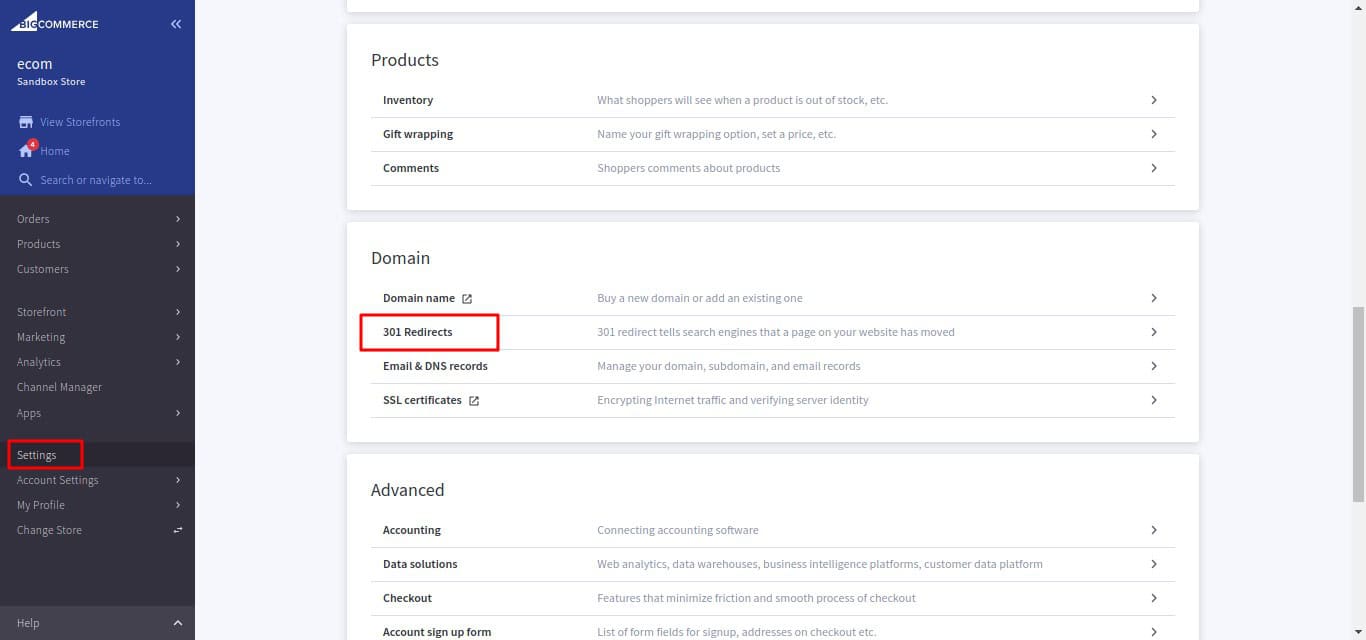
2. Click Add Redirects.
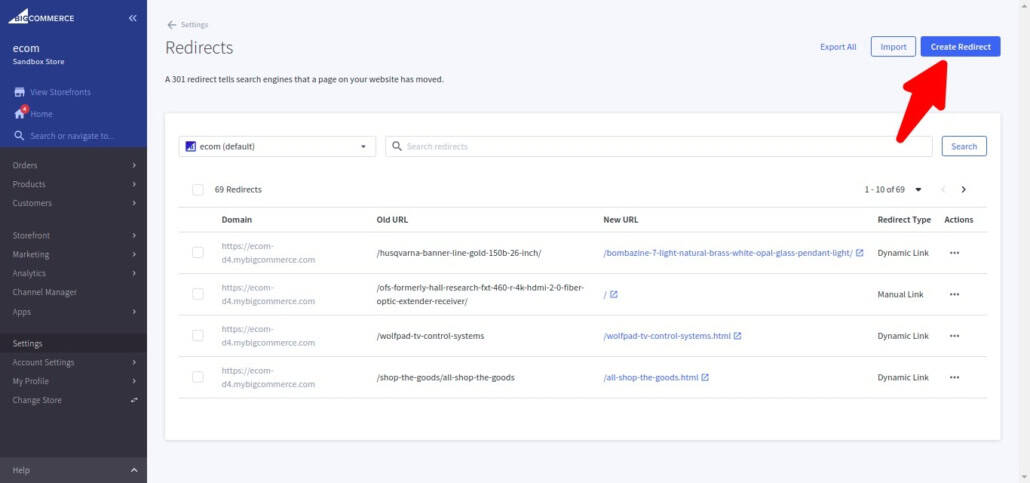
Under Old URL, enter the path of the old page (include only the folder and end with a /).
Choose between Manual or Dynamic redirects:
Manual Redirects: Enter the URL where you want to redirects in the New URL field (include only the folder and end with a /). You will need to update this redirects manually if the URL changes in the future.
Click Save to apply the redirects.
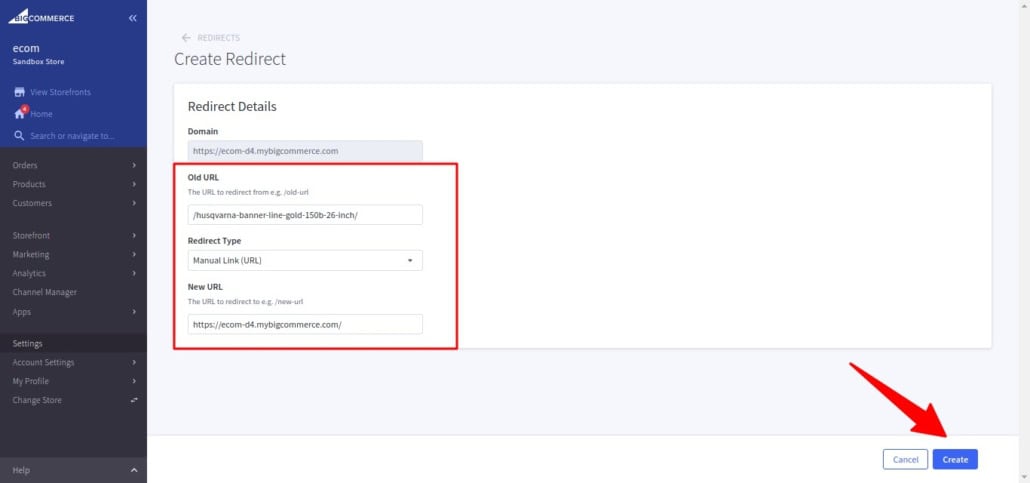
Dynamic Redirects: Click the link labeled “click here to choose a product, category, brand, or web page.” In the popup, select the type of page you’re redirecting to, choose the specific page from the list, and click Insert Link. This type of redirects will automatically update if the URL changes.
Click Save to apply the redirects.
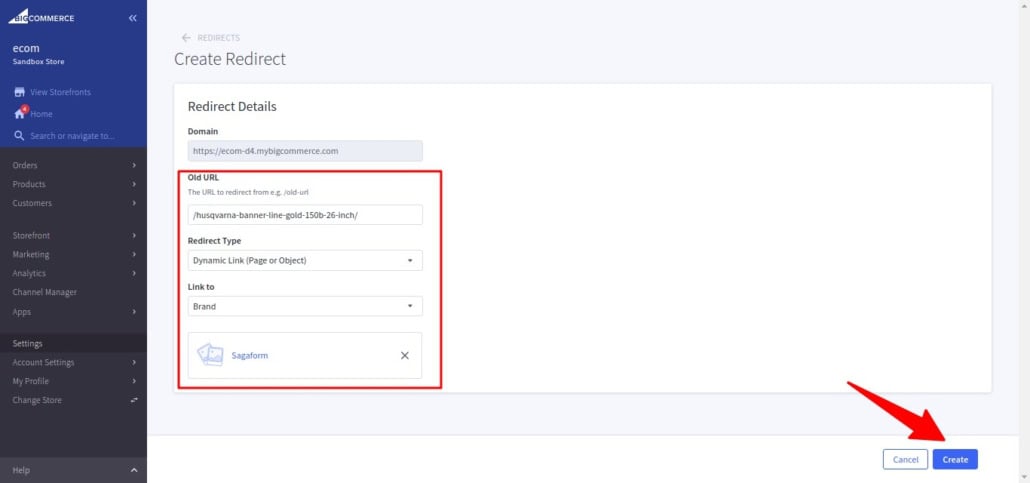
How to implement via CSV 301 redirects on BigCommerce:
To implement bulk 301 redirects in BigCommerce via CSV upload, follow these detailed steps:
Prepare Your CSV File
First, you need to create a CSV file that contains the redirects you want to set up.
Create the CSV File
- Open a Spreadsheet Application: Use Excel, Google Sheets, or a similar application.
Add Headers: Create a file with the following columns:
- Domain: The domain name you want to put redirects (e.g., samyakonline.biz)
- Old URL: The URL path you want to redirects from (e.g., /old-page).
- New URL: The URL path you want to redirects to (e.g., /new-page).

Save the File: Save or export the file as a CSV file (e.g., redirects.csv)
Access the URL Redirects Section in BigCommerce
Log in to Your BigCommerce Admin Panel
- Go to your store’s admin panel at https://yourstore.bigcommerce.com/admin
Navigate to URL Redirects
- Go to Settings > 301 Redirects.
- Click the “Import” button
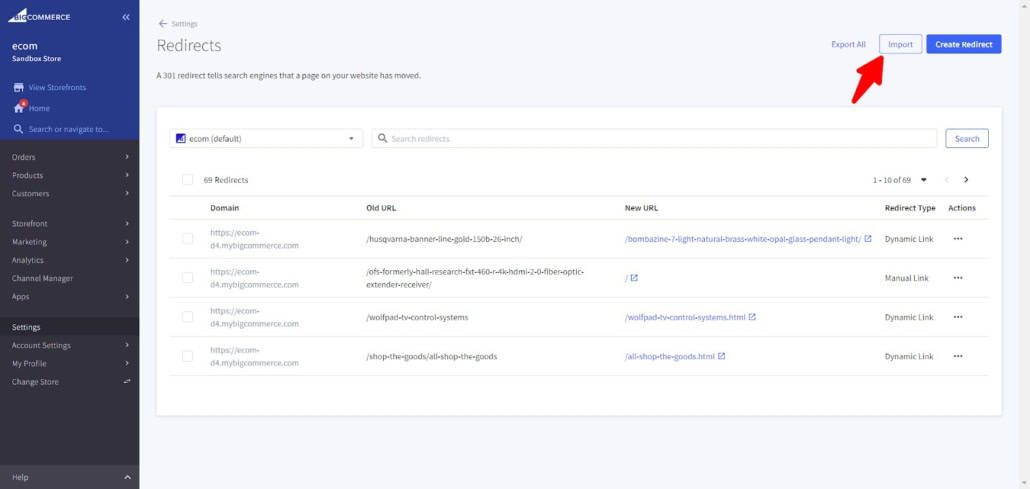
Upload Your CSV File
- Click Drag and drop a CSV file or Choose file to select your CSV file.
Note: (20 MB size limit)
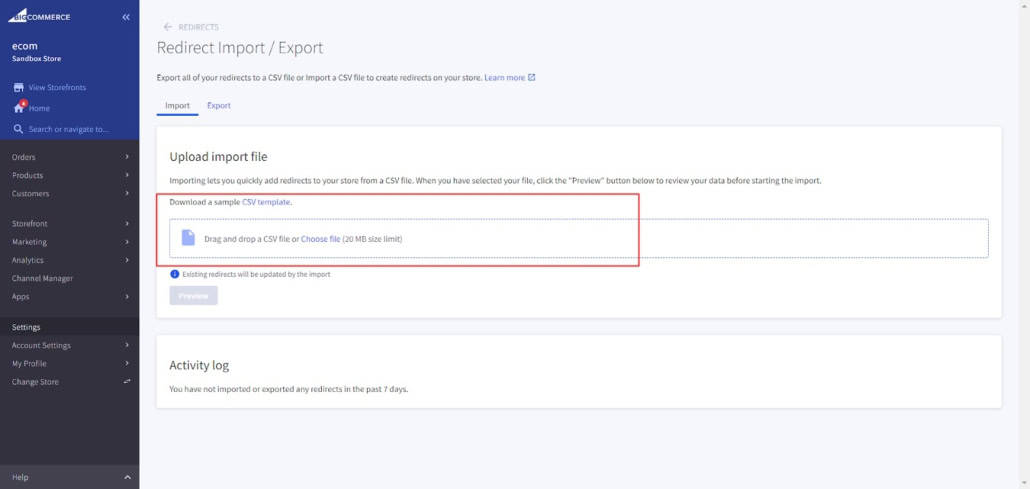
- Choose the CSV file you prepared (e.g., redirects.csv).
- Click Open to upload the file.
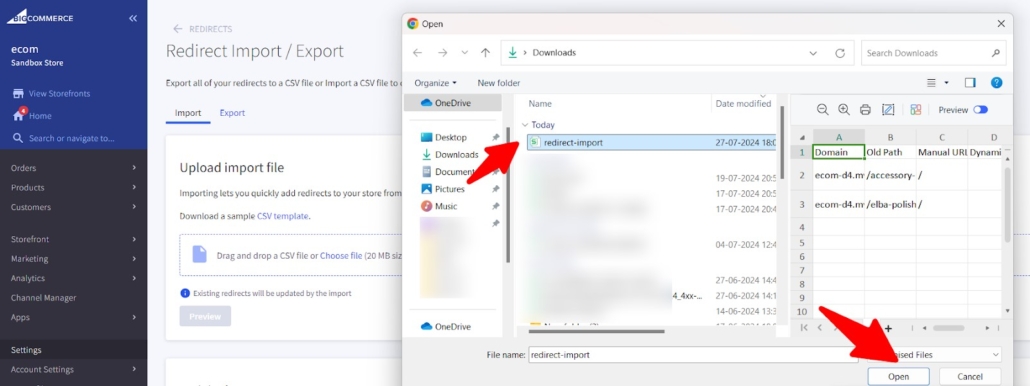
Click Preview.

- Click the start import button. BigCommerce will process your CSV file and set up the redirects accordingly.
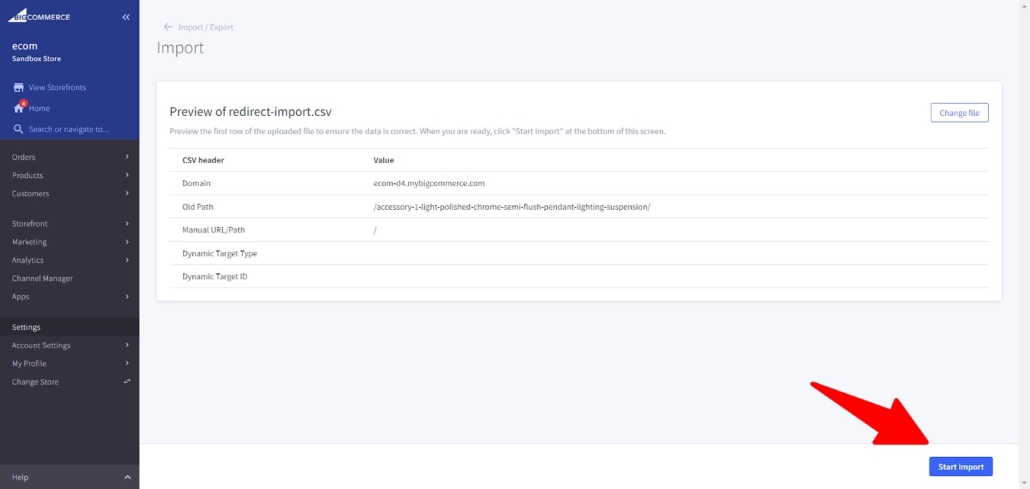
- After importing, check the list of redirects to ensure they have been added correctly.
- Look out for any errors or warnings that might have been reported during the import.
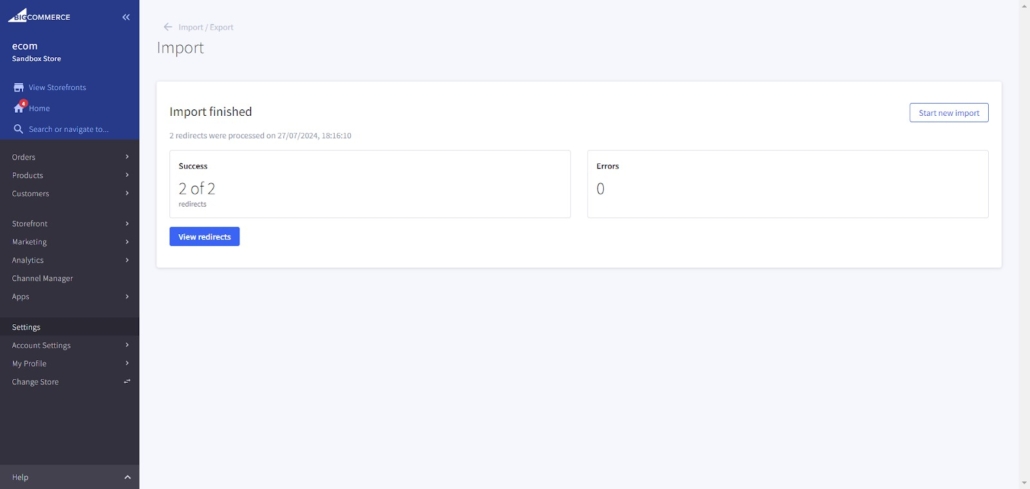
Additional Tips
- CSV Formatting: Ensure your CSV file is formatted correctly, with the appropriate headers and no extra spaces.
- Backup Data: Always backup your current redirects and settings before performing bulk imports.
- Error Handling: If there are errors during the import, correct them in your CSV file and re-upload.
Implementing redirects in BigCommerce is important for several reasons:
- Maintain SEO Rankings: When URLs change, using 301 redirects helps preserve the search engine rankings and authority of the original URL. This ensures that any existing SEO value is transferred to the new URL.
- Improve User Experience: redirects prevent users from encountering 404 errors (page not found) when accessing an old or outdated URL. This helps maintain a smooth and seamless browsing experience.
- Update URL Structure: As your site evolves, you might need to change your URL structure for better organization or to reflect changes in your product offerings. redirects ensure that these changes do not disrupt user access.
- Handle Discontinued Products: If a product is discontinued, you can redirects its URL to a similar product or a category page, guiding customers to relevant alternatives.
- Marketing Campaigns: redirects can be used to guide users from promotional or short-term campaign URLs to current and active pages, ensuring that marketing efforts remain effective even after campaigns end.
- Consolidate Duplicate Content: redirects help manage and consolidate duplicate content issues by pointing all variations of a URL to a single, canonical version.
- Rebranding or Domain Changes: If you rebrand your store or change your domain, 301 redirects ensure that all traffic is seamlessly directed to the new site, retaining visitors and search engine rankings.
- Fix Incorrect URLs: If users or external sites link to incorrect URLs, you can implement redirects to ensure these links still lead to the correct pages on your site.


Leave a Reply
Want to join the discussion?Feel free to contribute!